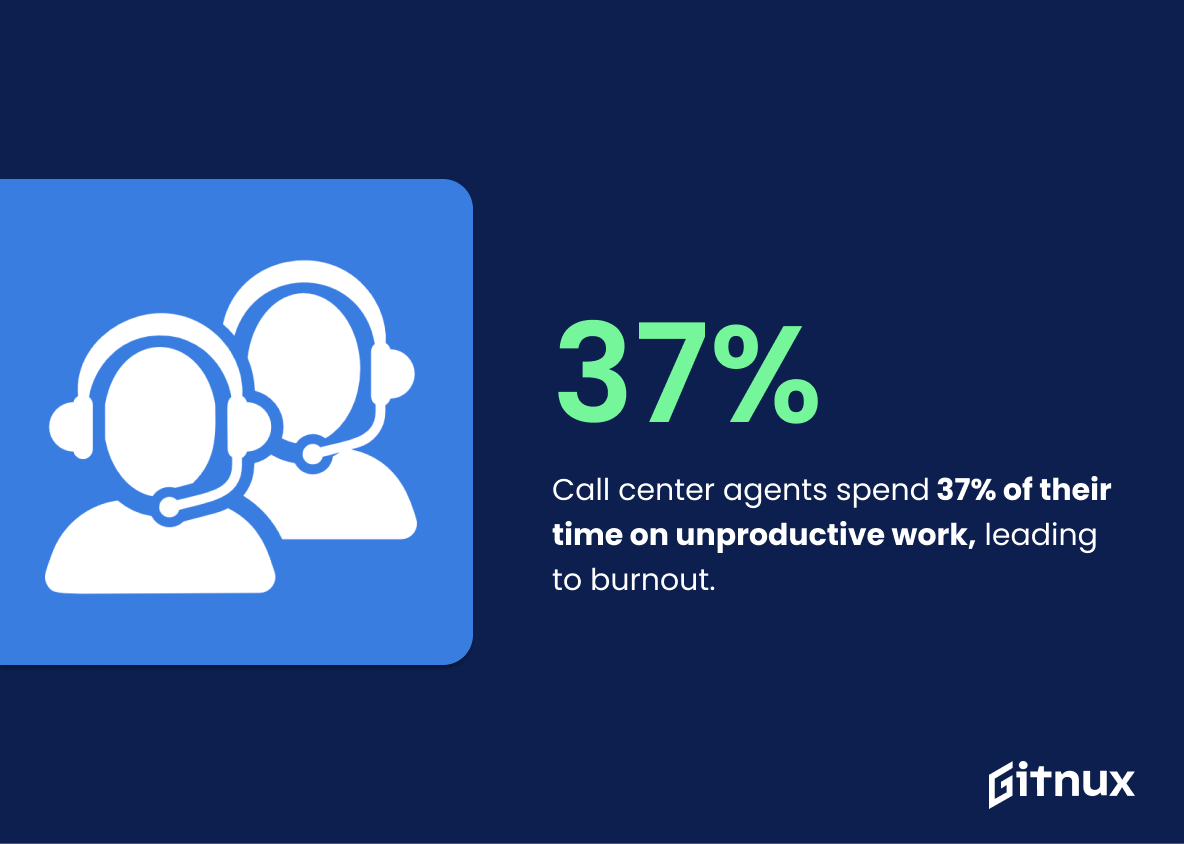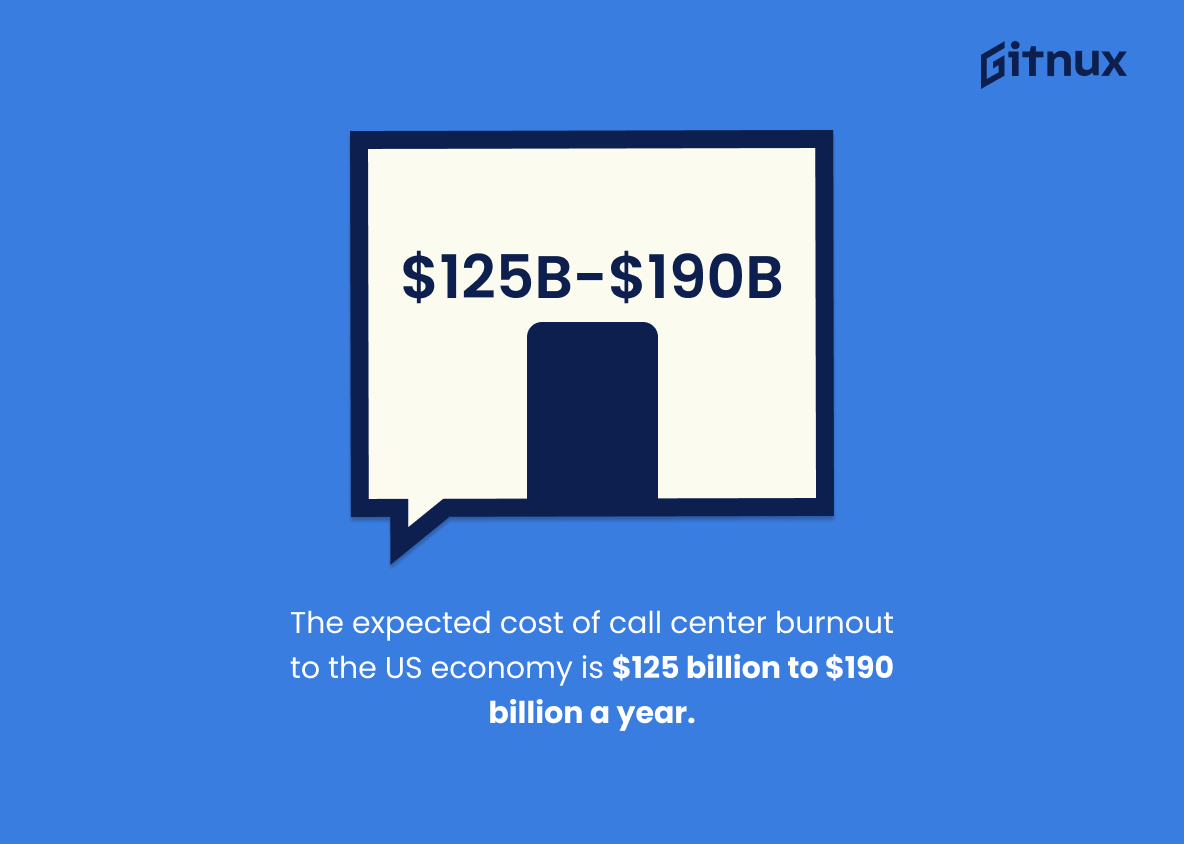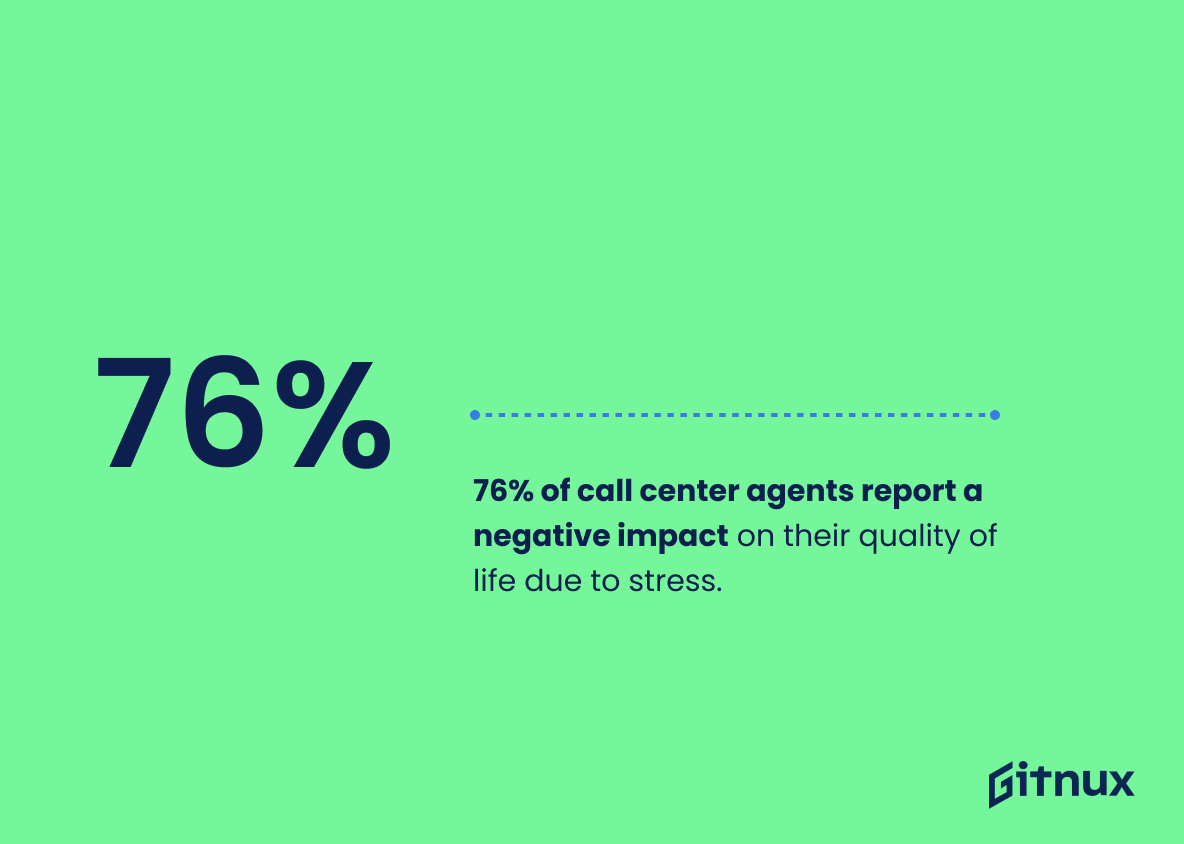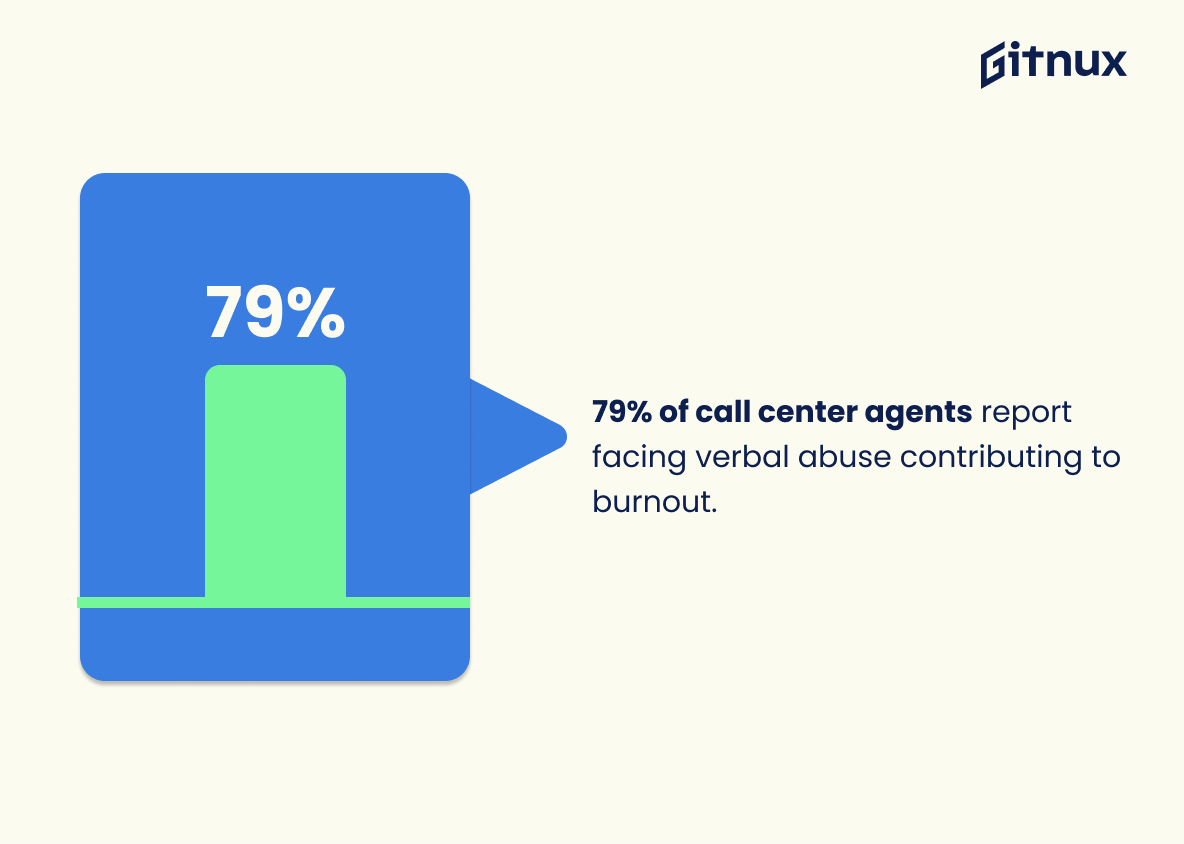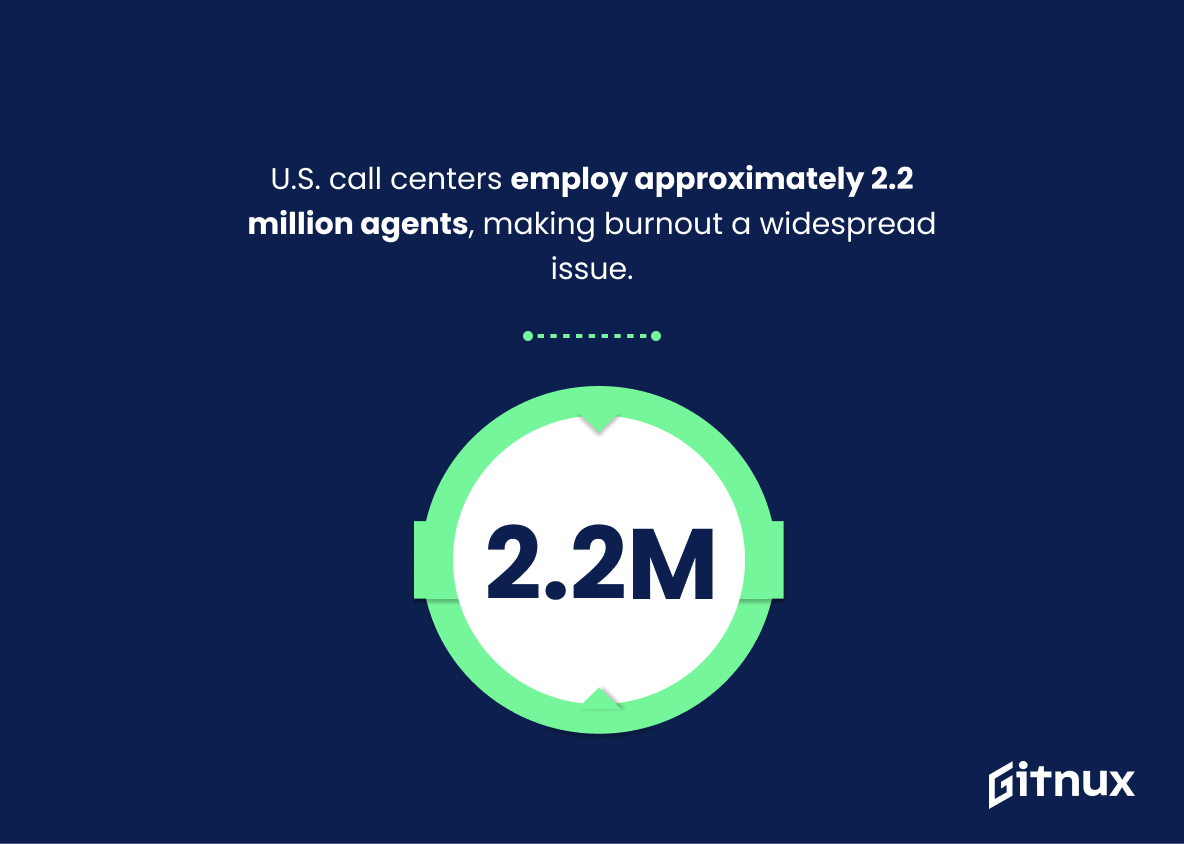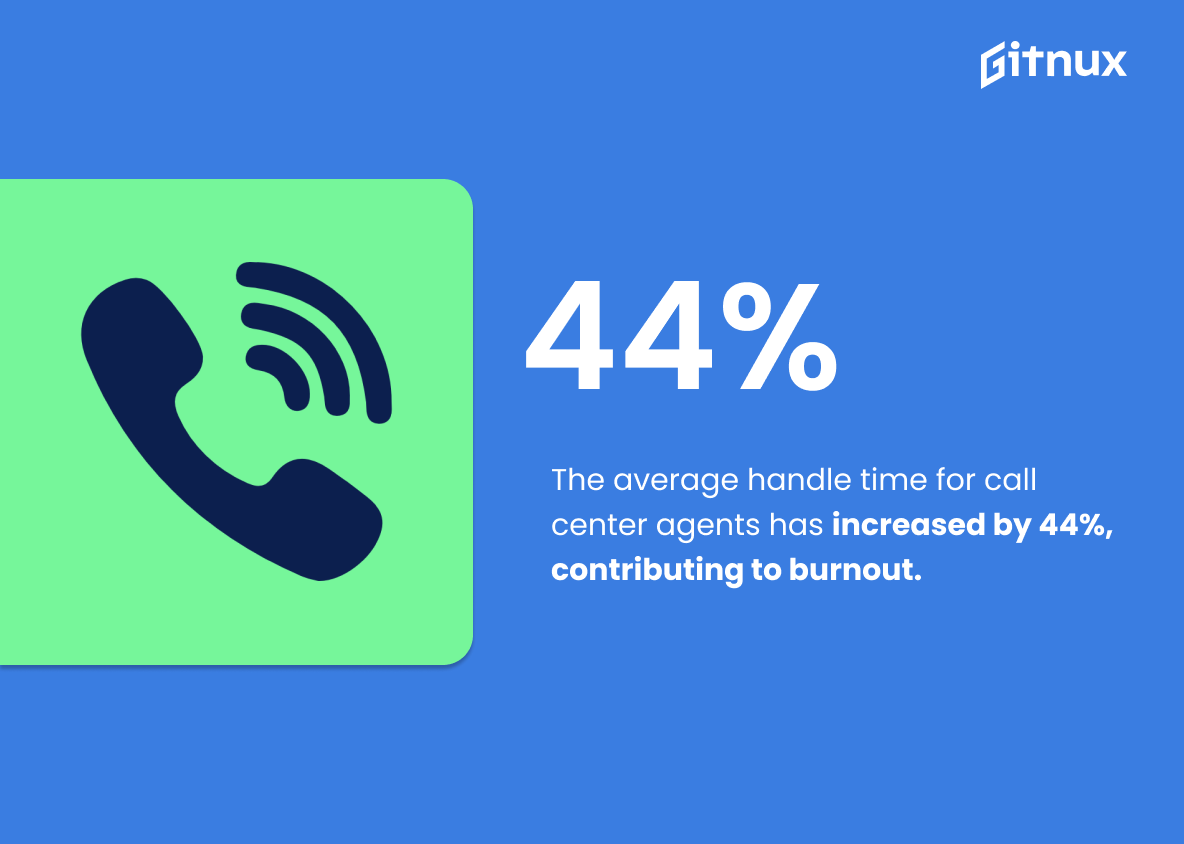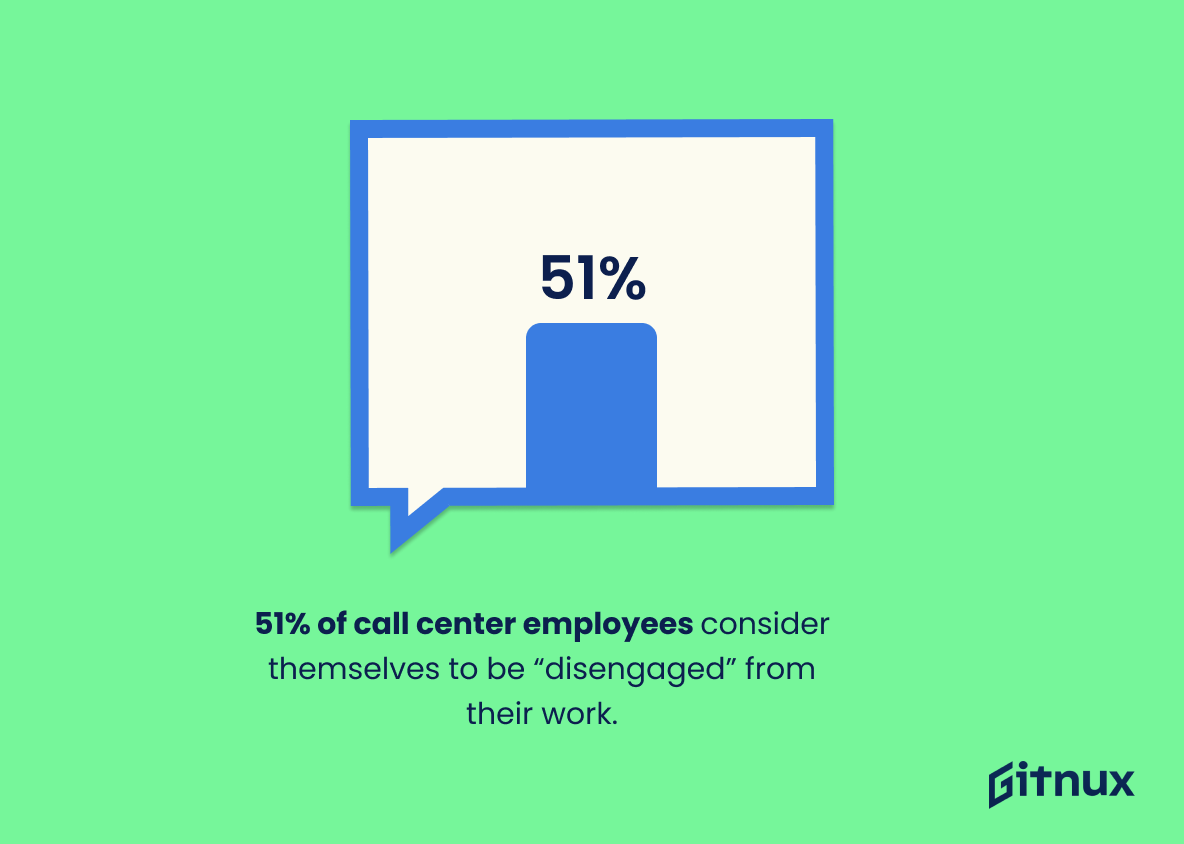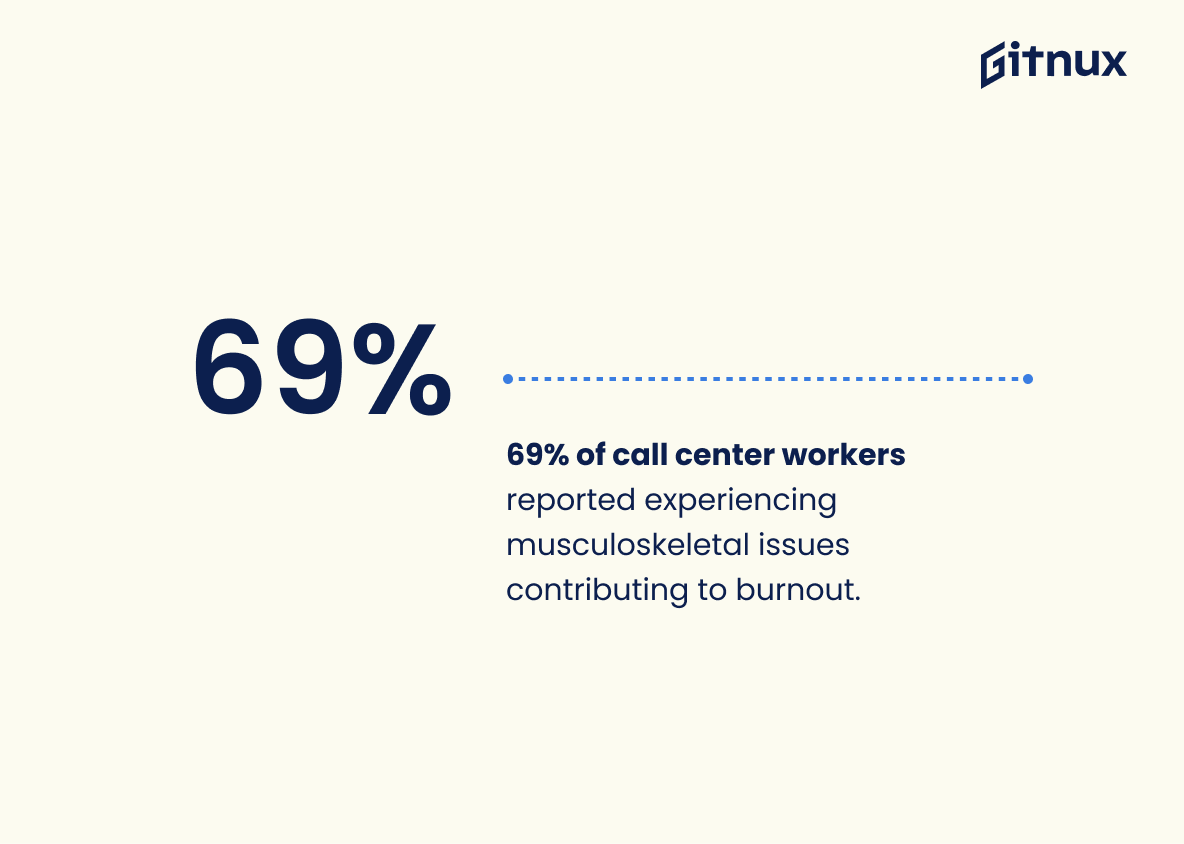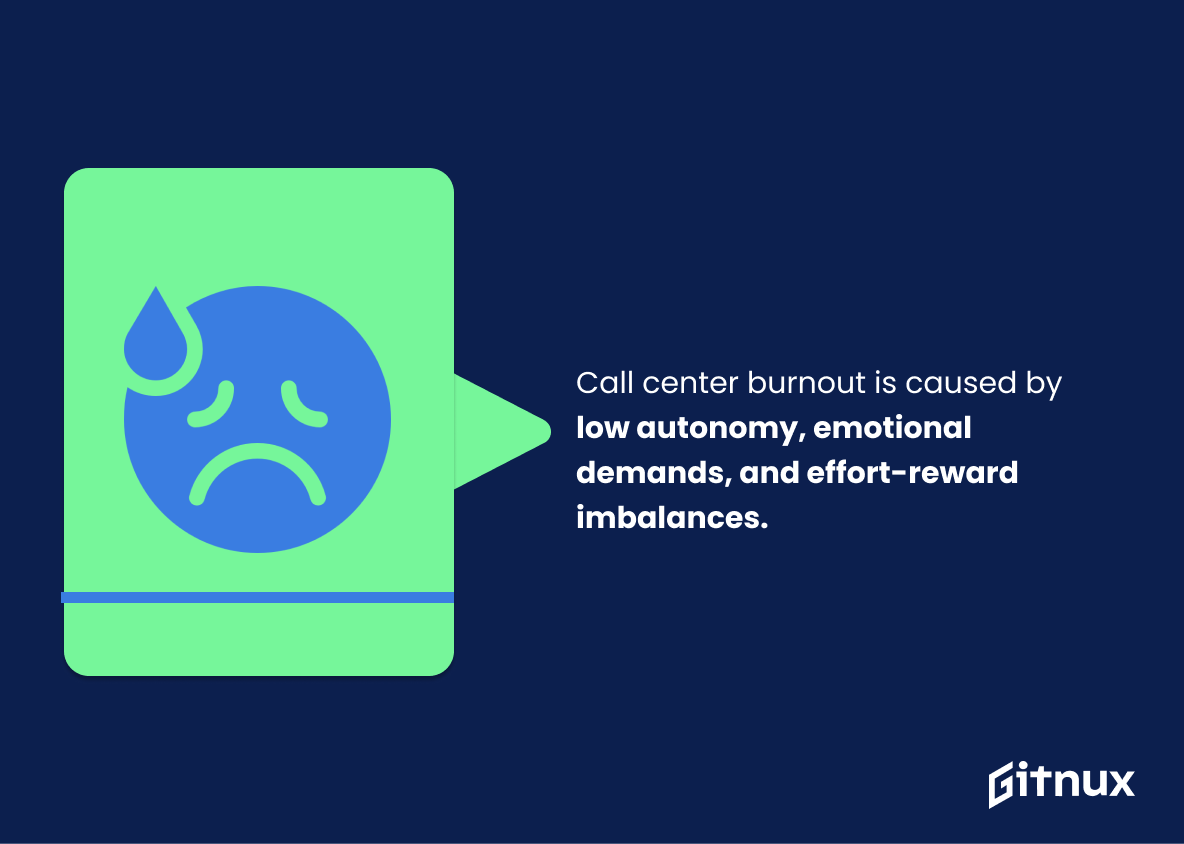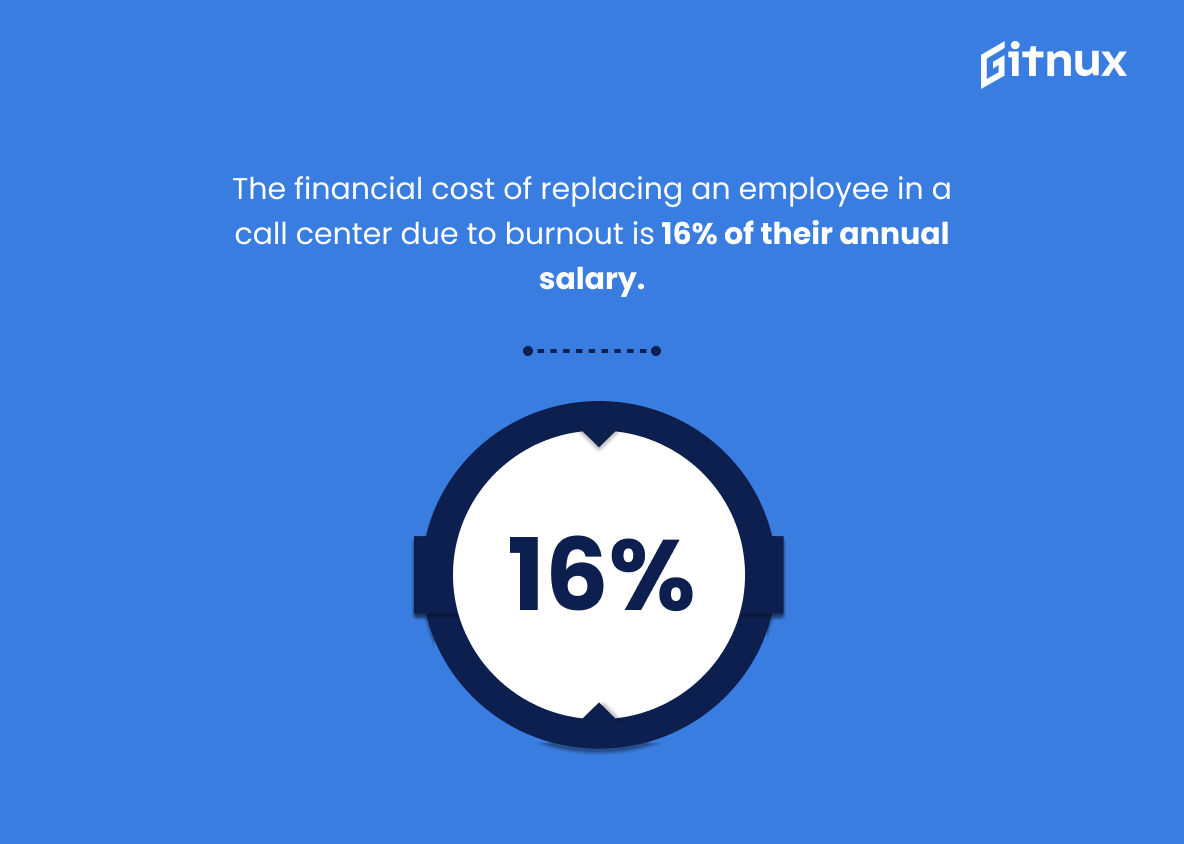Call center burnout is a serious issue that affects millions of employees around the world. Recent statistics show that 62% of call center employees identify burnout as one of their top workplace challenges, and the average annual turnover rate for agents is 30-45%. In addition, 74% are at risk due to high emotional labor, while highly empathic agents have an even higher risk (33%). Furthermore, 83%, 91%, and 76% reported work-related stress and burnout in 2020; anxiety or other mental health issues; and negative impacts on quality of life respectively.
Burnout can also be costly: 46% feel it has a negative impact on family life; 79% face verbal abuse contributing to burnout; employee engagement levels plummet by 35%; handle time increases by 44%; 43% don’t have enough support or training to do their jobs effectively; 51 % consider themselves “disengaged”; 80 % need breaks/rest time for productivity ; 69 % experience musculoskeletal issues related to job demands ; 16 % financial cost per replacement due to attrition . The expected cost of call center burnouts in US economy alone stands between $125 billion -$190 billion annually. With 2.2 million people employed in U.S., this makes it clear why understanding causes & prevention strategies should be taken seriously.
This statistic is a stark reminder of the immense pressure that call center agents face on a daily basis. It highlights the need for organizations to take proactive steps to reduce the risk of burnout among their employees, as it can have a significant impact on their overall performance and wellbeing. By understanding the prevalence of burnout in the call center industry, organizations can better equip their agents with the necessary resources and support to ensure their mental health and wellbeing is taken care of.
91% of call center agents experience anxiety and other mental health issues.
This statistic is a stark reminder of the toll that working in a call center can take on an individual’s mental health. It highlights the need for employers to take proactive steps to ensure that their call center agents are supported and have access to resources to help them manage their mental health. It also serves as a warning to potential call center agents to be aware of the potential risks associated with the job.
Call Center Burnout Statistics Overview
An average call center agent spends 37% of their time doing unproductive work leading to burnout.
This statistic is a stark reminder of the reality of call center burnout. It paints a vivid picture of the amount of time agents are spending on unproductive tasks, leading to a feeling of exhaustion and frustration. It highlights the need for organizations to take steps to reduce the amount of unproductive work and create a healthier work environment for their agents.
The expected cost of call center burnout to the US economy is $125 billion to $190 billion a year.
This staggering statistic serves as a stark reminder of the immense financial burden that call center burnout places on the US economy. With a potential cost of up to $190 billion a year, it is clear that the issue of call center burnout is one that needs to be addressed urgently.
76% of call center agents report a negative impact on their quality of life due to stress.
This statistic is a stark reminder of the toll that call center work can take on an individual’s quality of life. It highlights the need for employers to take proactive steps to reduce stress levels and create a healthier work environment for their employees.
79% of call center agents report facing verbal abuse contributing to burnout.
This statistic is a stark reminder of the harsh reality that many call center agents face on a daily basis. It highlights the prevalence of verbal abuse in the workplace, which can have a significant impact on an agent’s mental health and wellbeing, leading to burnout. This statistic serves as a call to action for employers to take steps to protect their employees from such abuse and create a healthier work environment.
U.S. call centers employ approximately 2.2 million agents, making burnout a widespread issue.
This statistic serves as a stark reminder of the sheer number of people who are affected by call center burnout. It paints a vivid picture of the magnitude of the issue, and highlights the need for organizations to take proactive steps to address it.
The average handle time for call center agents has increased by 44%, contributing to burnout.
This statistic is a stark reminder of the increasing pressure on call center agents, as the average handle time has risen by a significant 44%. This is a clear indication that agents are being asked to do more in less time, leading to a greater risk of burnout.
51% of call center employees consider themselves to be “disengaged” from their work.
This statistic is a stark reminder of the prevalence of call center burnout. It indicates that more than half of call center employees are feeling disconnected from their work, which can lead to a decrease in productivity and an increase in stress levels. This statistic is a clear indication that something needs to be done to address the issue of call center burnout and ensure that employees are engaged and supported in their work.
69% of call center workers reported experiencing musculoskeletal issues contributing to burnout.
This statistic is a stark reminder of the physical toll that call center work can take on employees. It highlights the need for employers to take proactive steps to ensure that their workers are not suffering from musculoskeletal issues that can lead to burnout. It also serves as a warning to potential call center workers that they should be aware of the potential physical strain that the job can put on them.
Major contributors for burnout among call center agents are low job autonomy, emotional demands, job demands, and effort-reward imbalances.
This statistic is a crucial insight into the causes of burnout among call center agents. It highlights the need for employers to address the lack of job autonomy, emotional demands, job demands, and effort-reward imbalances that can lead to burnout. By understanding the root causes of burnout, employers can take steps to create a healthier work environment and reduce the risk of burnout among their employees.
The financial cost of replacing an employee in a call center due to burnout is 16% of their annual salary.
This statistic serves as a stark reminder of the financial burden that call center burnout can have on businesses. It highlights the importance of taking proactive steps to reduce burnout in order to avoid the costly consequences of employee turnover.
Conclusion
The statistics presented in this blog post demonstrate the prevalence and cost of call center burnout. With over two million agents employed in U.S. call centers, it is clear that burnout has become a widespread issue with serious financial implications for businesses and employees alike. Contributing factors to agent burnout include low job autonomy, emotional demands, job demands, effort-reward imbalances as well as musculoskeletal issues caused by long hours spent on the phone or computer without adequate breaks or rest time. It is essential for employers to recognize these challenges and take steps to reduce stress levels among their staff if they are going to prevent high turnover rates due to employee dissatisfaction and fatigue from becoming an even bigger problem than it already is today.
References
0. – https://www.pubmed.ncbi.nlm.nih.gov
1. – https://www.genesys.com
2. – https://www.preparedex.com
3. – https://www.businesslistings.net.au
4. – https://www.hbr.org
5. – https://www.jefferson.edu
6. – https://www.forbes.com
7. – https://www.emplo.com
8. – https://www.callcentrehelper.com
9. – https://www.contactcenterpipeline.com
10. – https://www.hrdailyadvisor.blr.com
ZipDo, cited June 2023: Call Center Burnout Statistics
